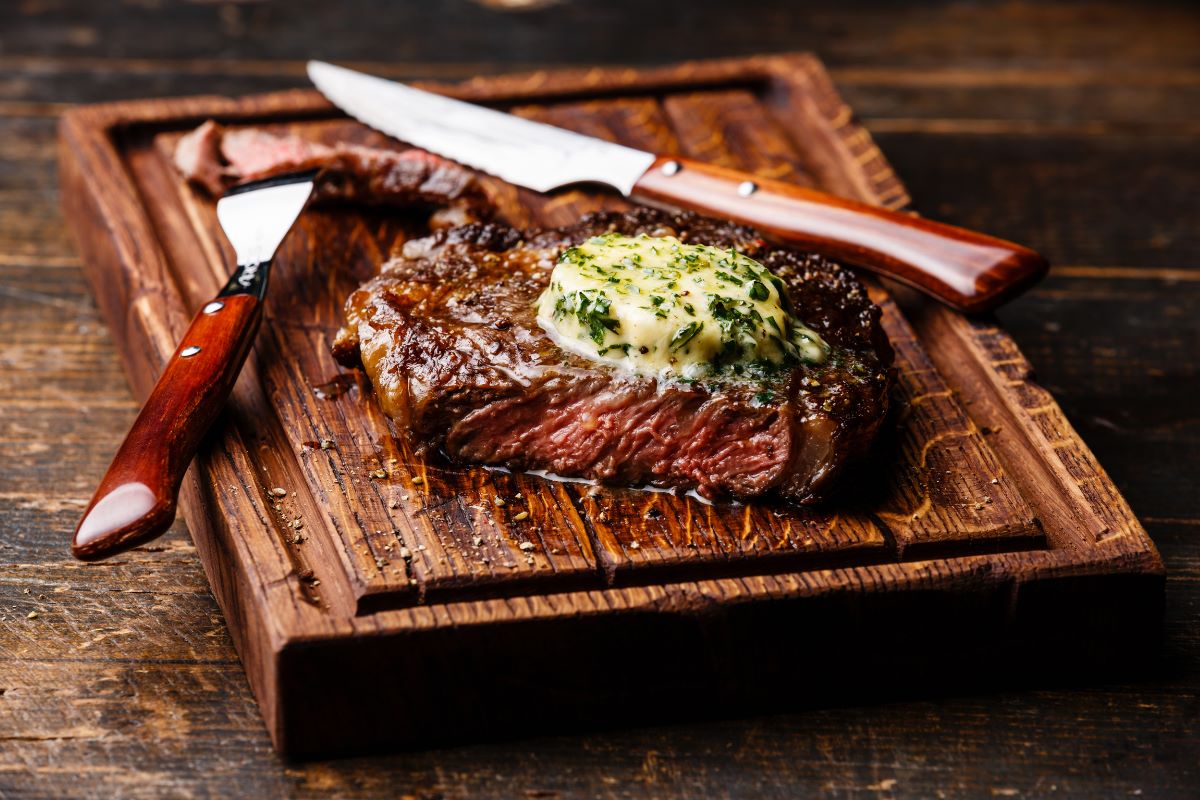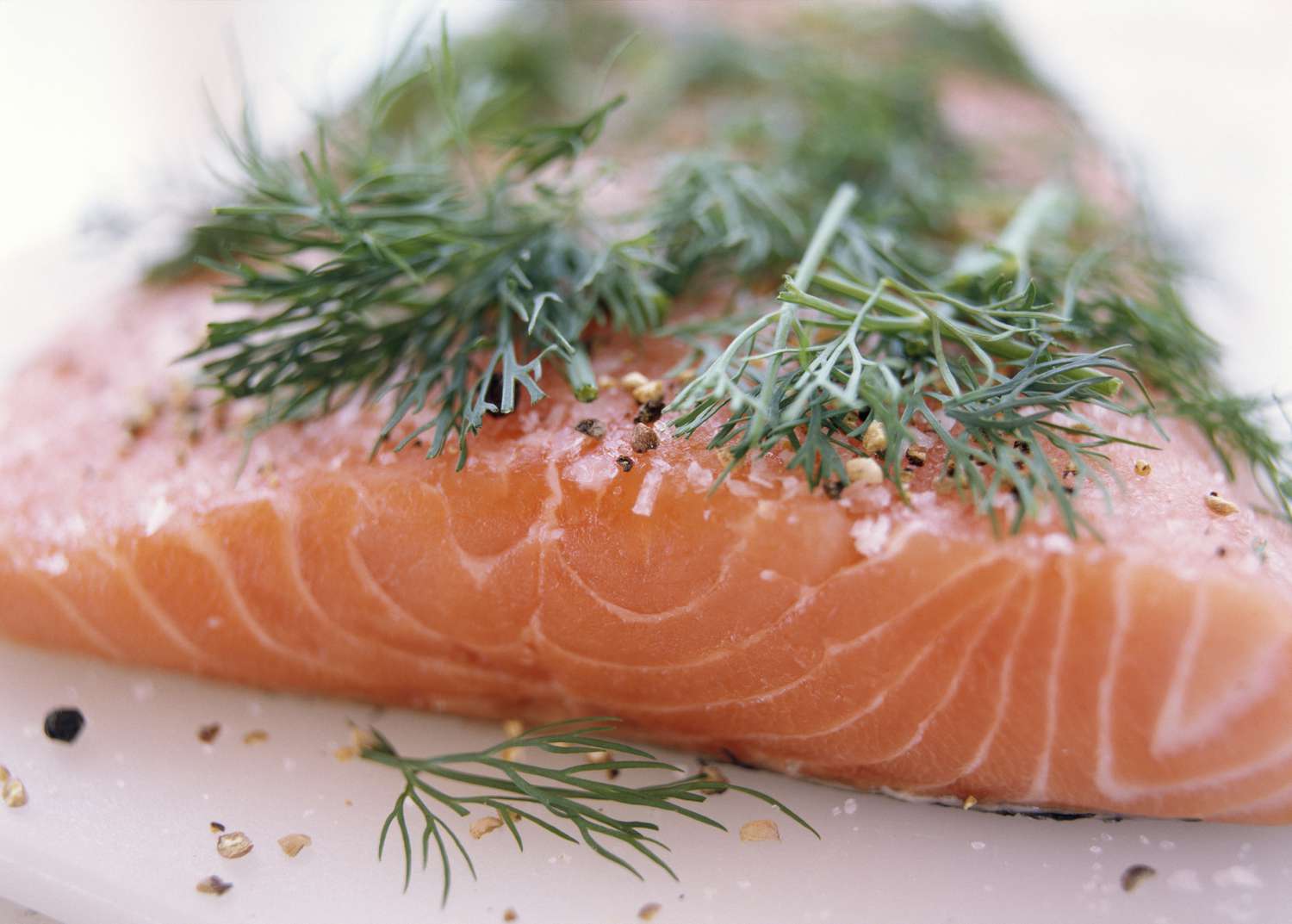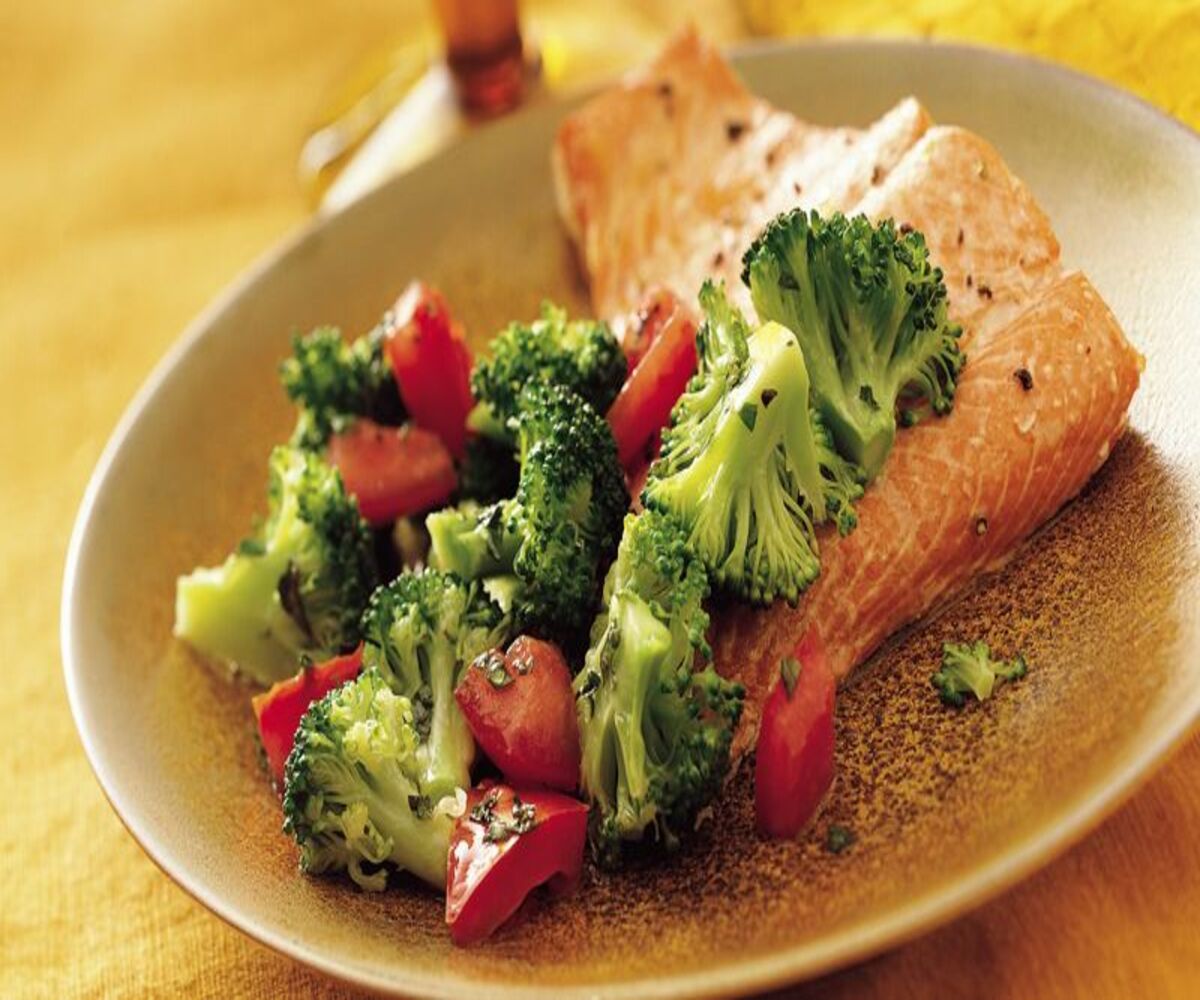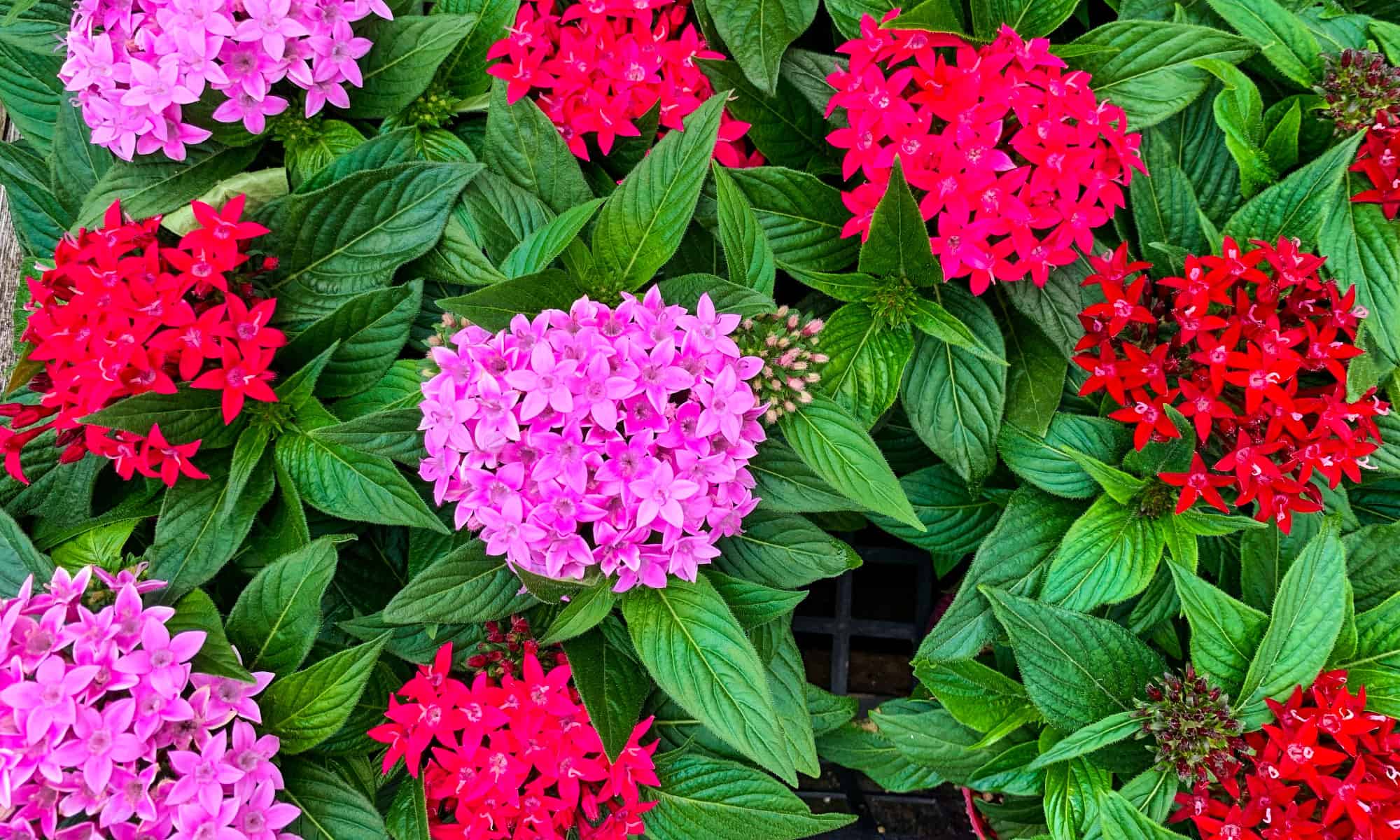Home>Types of Gardening>Edible Gardening>What Herbs Grow Well In Shade
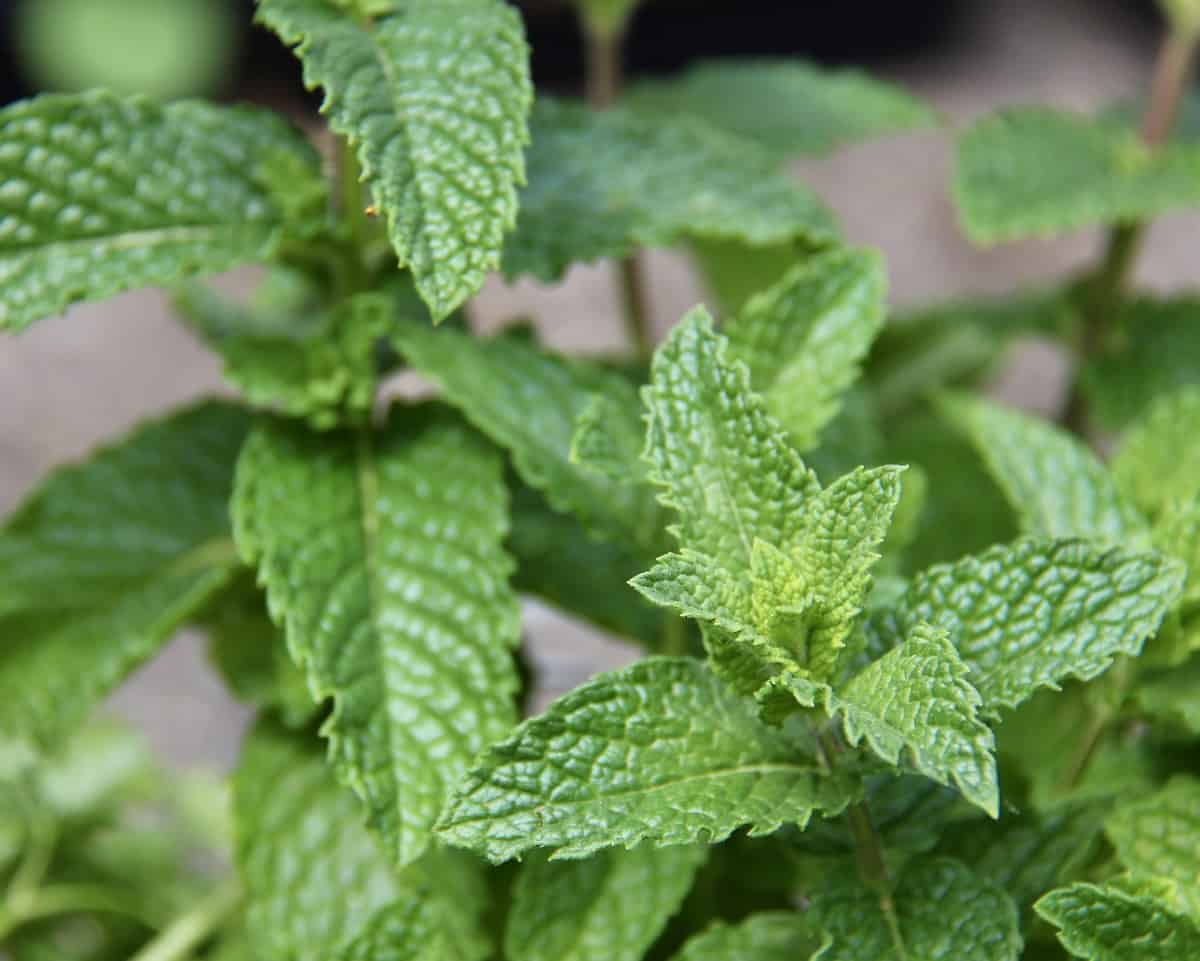

Edible Gardening
What Herbs Grow Well In Shade
Modified: January 22, 2024
Discover the best herbs for your shade garden with our guide to edible gardening. Learn which herbs thrive in low-light conditions and add flavor to your dishes.
(Many of the links in this article redirect to a specific reviewed product. Your purchase of these products through affiliate links helps to generate commission for Chicagolandgardening.com, at no extra cost. Learn more)
Table of Contents
Introduction
Welcome to the world of edible gardening! If you’re a nature enthusiast with a green thumb, you’ve come to the right place. Edible gardening involves growing your own fruits, vegetables, and herbs, allowing you to enjoy the satisfaction of harvesting fresh produce right in your own backyard. While sunny garden spots are ideal for most edible plants, there are plenty of options for those who have a shady garden or limited sun exposure.
Shade gardening doesn’t have to limit your edible gardening dreams. In fact, many herbs can thrive in shady conditions, providing you with an abundance of flavorful leaves and spices. Whether you have a small balcony, a shady corner in your yard, or live in an area with dense tree cover, you can still enjoy the benefits of growing your own herbs.
If you’re new to shade gardening, you may be wondering how to choose the right herbs for your specific conditions. Don’t worry – we’ve got you covered. In this article, we’ll explore the world of shade-loving herbs, discussing the factors to consider when choosing them and providing a list of some popular options. You’ll also find valuable tips to help you successfully grow herbs in shady areas.
Before we dive into the specific herbs that thrive in shade, let’s take a closer look at the key factors to consider when selecting shade-loving herbs for your edible garden.
Understanding Shade Gardening
Shade gardening refers to the practice of growing plants in areas that receive limited direct sunlight. While most plants require around 6 to 8 hours of sunlight per day to thrive, there are certain plants, including herbs, that have adapted to tolerate or even prefer shady conditions.
When it comes to shade gardening, it’s important to understand the different types of shade. Full shade refers to areas that receive no direct sunlight throughout the day, such as under dense tree canopies or in shaded corners of buildings. Partial shade, on the other hand, refers to areas that receive some direct sunlight, but for less than 6 hours a day. Understanding the specific shade conditions in your garden will help you choose the right herbs that can flourish in those conditions.
Shade gardening offers several benefits. First and foremost, it allows you to make use of areas in your garden that would otherwise go unused due to lack of sunlight. By growing shade-loving herbs, you can maximize your garden space and enjoy a bountiful harvest of fresh herbs.
Shade gardening also helps combat issues like excessive heat and water evaporation. Shady areas tend to retain moisture better than sun-drenched spots, reducing the need for frequent watering. Additionally, shade can provide a natural cooling effect, creating a more comfortable environment for both plants and gardeners.
However, it’s important to note that not all herbs will thrive in shade. Some herbs, such as basil and rosemary, are sun-lovers and require ample sunlight to grow their best. But fear not – there are plenty of herbs that are perfectly suited for shady conditions. By selecting the right shade-loving herbs for your garden, you can still enjoy a diverse and flavorful herb collection.
Now that we have a better understanding of shade gardening, let’s explore the factors to consider when choosing shade-loving herbs for your edible garden.
Factors to Consider When Choosing Shade-Loving Herbs
When selecting herbs for your shade garden, there are a few key factors to consider to ensure success. Taking these factors into account will help you choose the right herbs that can thrive in your specific shade conditions. Here are some important considerations:
- Light Requirements: While shade-loving herbs can tolerate less sunlight than their sun-loving counterparts, it’s still important to assess the amount of light your garden receives. Some shade-loving herbs prefer partial shade, while others can thrive in full shade. Understanding the light requirements of different herbs will help you make the right choices for your garden.
- Moisture Needs: Shady areas tend to retain more moisture, so it’s essential to select herbs that can tolerate or even enjoy slightly damp soil. Avoid herbs that require a dryer growing environment, as they may struggle in shady, moisture-rich conditions.
- Growth Habit: Consider the growth habit of the herb before planting. Some herbs, like mint and lemon balm, spread vigorously through underground rhizomes. While this can be an advantage for ground cover or container gardening, it may not be suitable for smaller garden spaces or areas where you want to control the herb’s growth.
- Flavor and Culinary Uses: One of the joys of growing herbs is incorporating them into your culinary creations. Consider the flavor profiles and culinary uses of the herbs you choose. Select herbs that can complement your favorite dishes and elevate the flavors of your meals.
- Perennial vs. Annual: Decide whether you prefer perennial or annual herbs. Perennial herbs come back year after year, providing a long-lasting addition to your garden. Annual herbs, on the other hand, complete their life cycle within a year. Both options have their benefits, so choose based on your gardening goals and preferences.
By considering these factors, you’ll be able to choose shade-loving herbs that are well-suited to your garden’s conditions and your culinary preferences. Now, let’s explore some of the best herbs that thrive in shade, ensuring a vibrant and flavorful edible garden.
Herbs That Thrive in Shade
Just because your garden receives limited sunlight doesn’t mean you can’t grow a wide variety of flavorful herbs. There are several shade-loving herbs that not only tolerate shady conditions but actually thrive in them. Here are some of the top herbs to consider for your shade garden:
- Mint: Mint is a versatile and aromatic herb that can grow well in shade. With its refreshing taste and cooling properties, it’s perfect for adding flavor to drinks, desserts, and savory dishes.
- Lemon Balm: Lemon balm is a member of the mint family and shares similar growing characteristics. It has a bright, citrusy scent and is often used to make teas, infused oils, and herbal sachets.
- Parsley: Parsley is a biennial herb that can thrive in partial shade. It has a fresh, mild flavor and is a staple in many cuisines around the world. Both the flat-leaf and curly varieties can be grown in shady areas.
- Chives: Chives are a versatile herb that can add a mild onion flavor to a wide range of dishes. They tolerate shade well and are easy to grow, making them a popular choice for shade gardens.
- Cilantro: Cilantro, also known as coriander, is a popular herb in many culinary traditions. It prefers cooler temperatures and can tolerate partial shade. Both the leaves and seeds of the plant are used in cooking.
- Oregano: Oregano is a flavorful herb that can thrive in both shady and sunny conditions. It adds a distinctive flavor to Italian and Mediterranean dishes and is often used in herb blends and sauces.
- Thyme: Thyme is a hardy herb that can tolerate shade while still producing aromatic leaves. It has a strong flavor that pairs well with roasted meats, stews, and soups.
- Sage: Sage is a perennial herb that can handle partial shade. Its earthy, savory flavor is commonly used in dishes like stuffing, sausages, and bean soups.
- Sweet Woodruff: Sweet woodruff is a shade-loving herb with fragrant leaves that are often used to flavor drinks and desserts. It’s a beautiful ground cover plant that adds a touch of elegance to shady areas.
- Bergamot: Bergamot, also known as bee balm or monarda, is a striking herb with vibrant flowers and a citrusy aroma. It can tolerate partial shade and is often used in teas and herbal remedies.
These are just a few examples of shade-loving herbs that you can incorporate into your edible garden. Experiment with different varieties and discover the flavors and aromas that suit your taste preferences. With these herbs, your shade garden will be bursting with culinary possibilities.
Mint
Mint is a versatile and robust herb that thrives in shady conditions, making it a perfect addition to your shade garden. With its refreshing taste and cooling properties, mint is a popular choice for adding flavor to a wide range of dishes, drinks, and even desserts.
There are many different varieties of mint, including spearmint, peppermint, and chocolate mint, each with its own unique flavor profile. The leaves of mint plants are bright green and emit a refreshing aroma when crushed or bruised.
When growing mint in shade, it’s important to provide well-drained soil and regular watering to keep the plants healthy and vigorous. Mint has a tendency to spread vigorously through underground rhizomes, so you may want to plant it in containers or use barriers to control its growth.
In the kitchen, mint is commonly used to flavor drinks like mojitos, iced teas, and infused water. It can also be added to salads, sauces, marinades, and desserts for a burst of freshness. Mint leaves can be harvested and used fresh, dried for later use, or frozen in ice cube trays for convenience.
Aside from its culinary uses, mint also offers numerous health benefits. It aids in digestion, relieves nausea, and promotes relaxation. You can brew mint leaves into a soothing tea or use it as a natural remedy for common ailments.
One fun way to enjoy mint is by creating a mini “mint garden” in a container. Plant different varieties of mint together, and you’ll have a delightful assortment of flavors and scents at your fingertips.
Remember to harvest mint regularly to keep the plants tidy and prevent them from becoming invasive. Pruning encourages new growth and helps maintain the plant’s shape.
So, whether you’re sipping a refreshing mint-infused cocktail or garnishing your favorite dish with a sprinkle of mint leaves, this shade-loving herb will add a burst of flavor and a touch of coolness to your culinary adventures.
Lemon Balm
Lemon balm is a delightful herb that thrives in shady conditions, making it a perfect addition to your shade garden. This aromatic herb belongs to the mint family and shares similar growing characteristics, making it easy to cultivate even in areas with limited sunlight.
As the name suggests, lemon balm has a bright and citrusy scent, reminiscent of lemon. The leaves are a vibrant green, with a slightly wrinkled texture. Crushed or bruised leaves release a refreshing lemony fragrance.
Lemon balm is known for its calming properties and is often used in herbal remedies to promote relaxation and reduce stress. Enjoying a cup of hot lemon balm tea in the evening can help soothe the mind and prepare you for a restful night’s sleep.
In the kitchen, lemon balm adds a pleasant lemony flavor to a variety of dishes and beverages. It can be used to infuse oils and vinegars, flavor salads and marinades, or incorporated into desserts and baked goods.
When growing lemon balm in shade, ensure that the soil is well-draining and keep the plants evenly moist. Lemon balm can be grown in containers or directly in the ground, but be aware that it can spread vigorously through underground rhizomes. To prevent it from taking over your garden, consider planting it in containers or using barriers to contain its growth.
Harvesting lemon balm leaves is a simple process. Simply snip off the stems using a pair of sharp scissors, ideally in the morning when the essential oils are at their peak concentration. Fresh leaves can be used immediately, while dried leaves can be stored in airtight containers for future use.
Whether you’re enjoying a refreshing glass of lemon balm-infused water, adding its citrusy flavor to a summer salad, or using it in a calming herbal remedy, this shade-loving herb is sure to brighten up your culinary endeavors.
Parsley
Parsley is a versatile and hardy herb that can thrive in partial shade, making it an excellent choice for your shade garden. With its vibrant green leaves and fresh, mild flavor, parsley is a staple in many cuisines around the world.
There are two main types of parsley: flat-leaf (Italian) parsley and curly parsley. Both varieties can be grown in shady areas, adding a touch of freshness and visual appeal to your garden.
Parsley is a biennial herb, meaning it completes its life cycle in two years. While it may not last as long as some perennial herbs, it self-seeds easily, allowing it to come back year after year with minimal effort.
When growing parsley in shade, it’s essential to provide well-draining soil and regular watering. The plants prefer slightly moist conditions but can suffer from root rot if the soil becomes waterlogged.
In the kitchen, parsley is widely used as a versatile herb to enhance the flavor and appearance of various dishes. It pairs well with meats, vegetables, soups, stews, and sauces, adding a fresh and mild herbal note. The flat-leaf variety is often preferred for its stronger flavor, while curly parsley is commonly used as a decorative garnish.
Harvesting parsley is a simple process. You can snip off individual leaves as needed or cut entire stems at the base of the plant. By regularly harvesting, you encourage new growth and maintain the plant’s shape and vigor.
Parsley leaves can be used fresh, dried, or even frozen for future use. Drying parsley involves bundling the stems together and hanging them upside down in a well-ventilated area. Once dried, the leaves can be crumbled and stored in airtight containers.
Aside from its culinary uses, parsley offers several health benefits. It is rich in vitamins A, C, and K, as well as antioxidants and minerals. Adding parsley to your diet can boost your immune system, support bone health, and aid digestion.
So, whether you’re sprinkling freshly chopped parsley on your favorite pasta dish or using it to garnish a homemade soup, this shade-loving herb will bring both flavor and nutritional benefits to your culinary creations.
Chives
Chives are a versatile and flavor-packed herb that thrives in shady conditions, making them an excellent choice for your shade garden. These slender, grass-like plants belong to the onion family and add a mild onion flavor to a wide range of culinary dishes.
Chives are known for their resilient nature and ability to tolerate partial shade, making them ideal for gardens with limited sunlight. They produce clusters of small, lavender-colored flowers atop long, hollow stems, adding a touch of beauty to your garden.
Growing chives in shade is relatively easy. They prefer well-draining soil and require regular watering to keep the soil moist. Chives are also suitable for container gardening, making them a versatile herb that can be grown in small spaces.
In the kitchen, chives add a mild onion-like flavor to dishes, without the overpowering pungency of mature onions. They are commonly used as a garnish on baked potatoes, soups, salads, and omelets. Chopped chives also work well in creamy dips and spreads.
One of the advantages of growing chives is their continuous growth throughout the growing season. You can start harvesting chive leaves as soon as the plants reach about 6 inches in height. Simply snip off the desired amount of leaves close to their base to encourage new growth.
Chives are known for their vibrant green color and mild onion flavor, which can elevate the taste and presentation of any dish. They also offer several health benefits, as they are rich in nutrients such as vitamins A and C, iron, and antioxidants.
If left unharvested, chives will produce beautiful blossoms that are not only visually appealing but also edible. The flowers have a milder flavor compared to the leaves and can be used as an attractive garnish in various dishes or tossed into salads for added color and flavor.
Whether you’re snipping fresh chives over a creamy bowl of soup or adding them to your favorite dish for a burst of flavor, this shade-loving herb will provide a delightful onion-like taste to your culinary creations.
Cilantro
Cilantro, also known as coriander, is a popular herb in many culinary traditions and can thrive in shady conditions, making it an excellent choice for your shade garden. With its bright green leaves and distinctive flavor, cilantro adds a fresh and tangy taste to a variety of dishes.
Cilantro leaves have a unique aroma and are often described as peppery, citrusy, and slightly floral. They are commonly used in Mexican, Indian, Middle Eastern, and Southeast Asian cuisines, where they add a vibrant burst of flavor.
Growing cilantro in partial shade is relatively easy. The plants prefer cool temperatures and can tolerate less sunlight compared to other herbs. Ensure that the soil is well-draining and keep it consistently moist to prevent the plants from bolting and going to seed too quickly.
In the kitchen, cilantro leaves are widely used to flavor salsas, guacamole, curries, stir-fries, and various other dishes. They have a sharp and pungent taste that pairs well with spicy flavors and adds a refreshing element to salads and dressings.
Cilantro leaves are best harvested when they are young and tender, before they start to develop a stronger flavor. You can snip off individual leaves as needed, or cut the entire stem just above a leaf node, encouraging new growth and prolonging the plant’s productivity.
In addition to its culinary uses, cilantro offers several health benefits. It is a good source of vitamins A, C, and K, as well as various antioxidants and minerals. Cilantro has also been associated with digestive health and may help lower cholesterol levels.
Cilantro is a versatile herb as both its leaves and seeds can be used in cooking. The seeds, known as coriander seeds, have a warm, citrusy flavor and are often ground and used in spice blends, pickling, and baking.
Whether you’re adding fresh cilantro leaves to a zesty bowl of salsa or incorporating coriander seeds into a flavorful curry, this shade-loving herb will bring a burst of flavor and vibrant aroma to your culinary creations.
Oregano
Oregano is a highly aromatic and flavorful herb that can thrive in both sunny and shady conditions, making it a versatile addition to your shade garden. With its distinct taste and aroma, oregano is a staple herb in Mediterranean and Italian cuisines.
While oregano prefers full sun, it can tolerate partial shade, especially in areas with moderate temperatures. It is a hardy herb that can survive in various soil types, but it thrives in well-draining soil with neutral to alkaline pH levels.
In the kitchen, oregano leaves are commonly used in sauces, soups, stews, pizza, pasta, and grilled dishes. It adds a robust, earthy flavor with a hint of bitterness and a touch of warmth. The leaves can be used fresh or dried, with each form offering a slightly different intensity of flavor.
When growing oregano in shade, ensure that the soil is consistently moist but not waterlogged. Overwatering can lead to root rot, so it’s important to strike a balance to keep the plants healthy.
Harvesting oregano leaves can be done by snipping off individual stems or cutting larger sections of the plant, depending on your needs. It’s best to harvest oregano leaves just before the plant flowers for the greatest concentration of essential oils, which contribute to its flavor and aroma.
Aside from its culinary uses, oregano is also known for its potential health benefits. It is rich in antioxidants, vitamins, and minerals, and some studies suggest that it may have antimicrobial and anti-inflammatory properties.
Oregano can be grown in containers or directly in the ground, making it suitable for various gardening spaces. Its low-growing habit also makes it a fantastic choice for ground cover, helping to suppress weeds and add visual interest to your shade garden.
So, whether you’re sprinkling dried oregano onto a homemade pizza or adding fresh oregano leaves to a flavorful pasta sauce, this versatile and resilient herb will infuse your dishes with a delicious Mediterranean flair.
Thyme
Thyme is a versatile and aromatic herb that can thrive in both sunny and shady conditions, making it an excellent choice for your shade garden. Known for its distinct flavor and fragrance, thyme is a staple herb in many culinary traditions around the world.
Thyme plants feature small, narrow leaves that are densely packed on woody stems. The leaves can range in color from green to gray, and some varieties even have variegated foliage, adding visual interest to your garden.
When growing thyme in shade, it’s important to select varieties that are more tolerant of low-light conditions. French thyme, Lemon thyme, and Creeping thyme are suitable options for shade gardens. Thyme prefers well-draining soil and requires minimal watering once established.
In the kitchen, thyme leaves are commonly used to flavor roasted meats, stews, soups, and sauces. It has a warm, earthy, and slightly minty taste that pairs well with a wide range of ingredients. Thyme leaves can be used fresh or dried, with their flavor intensifying when dried.
To harvest thyme, simply snip off individual stems or cut larger sections of the plant as needed. Pruning the plant regularly will promote bushier growth and ensure a steady supply of fresh leaves.
Aside from its culinary uses, thyme offers several health benefits. It contains vitamins C and A, as well as antioxidants and minerals. Thyme has been used in traditional medicine for its potential antibacterial, antifungal, and antiviral properties.
Thyme is a versatile herb that can be used in various garden settings. It can be grown in containers, on slopes, or as a ground cover, adding texture and visual interest to your shade garden.
Thyme is also a favorite among pollinators, attracting bees and butterflies with its fragrant flowers. By including thyme in your shade garden, you not only enhance your culinary creations but also contribute to the well-being of your local ecosystem.
So, whether you’re adding a sprig of fresh thyme to a savory dish or infusing its dried leaves into a hearty soup, this versatile herb will bring a touch of flavor and aroma to your shade garden and culinary endeavors.
Sage
Sage is a versatile and resilient herb that can thrive in both sunny and shady conditions, making it a fantastic addition to your shade garden. With its woody stems, soft silver-green leaves, and strong earthy flavor, sage is a distinct and aromatic herb highly valued in culinary applications.
When growing sage in partial shade, it’s important to choose varieties that are better adapted to low-light conditions. Common sage (Salvia officinalis) and several dwarf cultivars are suitable options for shade gardens. Sage prefers well-draining soil and requires minimal watering once established.
In the kitchen, sage leaves are known for their robust flavor that pairs well with rich and savory dishes. They are commonly used in Italian and Mediterranean cuisines to add depth to pasta sauces, stuffing, roasted meats, and hearty soups. Sage leaves can be used fresh or dried, with their flavor intensifying when dried.
Harvesting sage leaves is as simple as snipping off individual stems or cutting larger sections of the plant. Its dense foliage allows for continuous harvesting throughout the growing season, giving you a fresh supply of aromatic leaves for your culinary creations.
Sage not only offers delightful flavors but also potential health benefits. It contains various antioxidants and plant compounds that have been associated with anti-inflammatory and antimicrobial properties. It has also been traditionally used for its potential memory-enhancing properties.
Sage plants can grow into beautiful ornamental shrubs, adding both aesthetic appeal and functional benefits to your shade garden. They produce delicate purple or blue flowers that attract pollinators such as bees, butterflies, and beneficial insects.
With its distinctive flavor, pleasing scent, and decorative qualities, sage is a multi-purpose herb that can enhance both your cooking and your garden. Whether you’re seasoning a roasted chicken with fresh sage leaves or infusing sage into a comforting tea, this versatile herb will bring a touch of warmth and earthiness to your shade garden and culinary creations.
Sweet Woodruff
Sweet Woodruff is a shade-loving herb that adds a touch of elegance to your shade garden. With its delicate white flowers and fragrant leaves, it not only thrives in shady conditions but also provides a visual and aromatic delight.
Sweet Woodruff is a low-growing herbaceous perennial that forms a dense ground cover. Its leaves are bright green and whorled, giving off a pleasant aroma reminiscent of freshly mown hay when crushed. The small white flowers bloom in spring, adding a dainty charm to the garden.
When growing Sweet Woodruff in shade, it prefers well-drained soil with consistent moisture. It adapts well to various soil types, making it suitable for a wide range of garden conditions.
This herb is not primarily known for culinary uses, but its leaves lend a subtle vanilla-like flavor when dried. They can be used sparingly to infuse cream, syrups, or herbal teas. However, it’s important to note that Sweet Woodruff should be used in moderation, as excessive consumption may cause adverse effects.
Sweet Woodruff has long been used in herbal medicine for its potential medicinal properties. It is believed to have mild sedative and anti-inflammatory effects and has historically been used to support liver and digestive health.
Aside from its culinary and medicinal uses, Sweet Woodruff also serves as a natural insect repellent, making it a valuable addition to your garden. It helps deter pests such as mosquitoes and flies, making your outdoor space more enjoyable.
One of the standout features of Sweet Woodruff is its ability to provide a lush ground cover in shady areas where other plants may struggle. Its spreading habit makes it an excellent choice for filling in bare spots and suppressing weeds.
When harvesting Sweet Woodruff, you can trim the stems just above the ground level, leaving the plant to regenerate and fill out the area. The cut stems can be used fresh or dried for various purposes.
So, whether you’re looking to add a beautiful ground cover, enjoy the gentle fragrance of its leaves, or explore its potential culinary and medicinal uses, Sweet Woodruff is a shade-loving herb that brings both charm and functionality to your shade garden.
Bergamot
Bergamot, also known as bee balm or monarda, is a striking herb that thrives in shady conditions, making it a valuable addition to your shade garden. With its vibrant flowers, citrusy aroma, and delightful flavor, bergamot is a versatile and attractive herb to grow.
Bergamot plants have beautiful clusters of tubular flowers in shades of pink, purple, red, or white. These flowers not only add a pop of color to your garden but also attract pollinators like bees and butterflies, making it a beneficial choice for the ecosystem.
When growing bergamot in shade, it’s important to provide well-drained soil and consistent moisture. It can tolerate a range of soil conditions, but it prefers slightly acidic to neutral pH levels.
In the kitchen, bergamot leaves and flowers have a citrusy flavor, reminiscent of Earl Grey tea. The leaves can be used to make herbal teas or incorporated into salads, fruit dishes, baked goods, and infused syrups. The flowers also make a visually appealing garnish for drinks and desserts.
Aside from its culinary uses, bergamot has a long history of use in traditional medicine. It is believed to have antibacterial and antifungal properties, and its leaves are often used to make medicinal teas or herbal remedies for digestive ailments and respiratory issues.
Bergamot plants require regular pruning to maintain their shape and improve air circulation. Pruning also encourages bushier growth and helps prevent the spread of diseases.
With its fantastic aroma, eye-catching flowers, and potential health benefits, bergamot adds both visual appeal and versatility to your shade garden.
It’s worth noting that bergamot should not be confused with the citrus fruit of the same name used to flavor Earl Grey tea. While they share a similar flavor profile, they are derived from different plants.
So, whether you’re enjoying a cup of bergamot tea, incorporating its leaves into your culinary creations, or simply admiring its vibrant blooms, this shade-loving herb will bring a touch of beauty and citrusy delight to your garden.
Tips for Growing Herbs in Shade
Growing herbs in shade requires some special attention to ensure their success. Here are some useful tips to help you create a thriving shade garden of herbs:
- Choose the right herbs: Select herbs that are known for their shade tolerance. Mint, lemon balm, parsley, chives, cilantro, oregano, thyme, sage, sweet woodruff, and bergamot are excellent choices for shade gardens.
- Assess the shade levels: Different herbs have different shade requirements. Some can tolerate partial shade, while others prefer full shade. Evaluate the shade levels in your garden to determine which herbs will thrive in your specific conditions.
- Provide well-draining soil: Most herbs prefer well-draining soil to prevent waterlogged roots. Ensure that your planting area has good drainage to avoid issues like root rot and fungal diseases.
- Water consistently: Shade gardens tend to retain more moisture, but it’s still important to water your herbs regularly. Check the soil moisture levels and aim to keep it consistently moist, avoiding both waterlogged and dry conditions.
- Consider container gardening: If you have limited space or want more control over soil conditions, consider growing your herbs in containers. This allows you to easily move them to find the optimal amount of shade and control their growth.
- Provide some sunlight: While herbs can tolerate shade, they still benefit from some sunlight. Aim for at least a few hours of indirect sunlight each day to promote healthy growth and maximize flavor.
- Control herb growth: Some herbs, like mint and lemon balm, have a tendency to spread vigorously. To prevent them from taking over your garden, consider planting them in containers or using barriers to contain their growth.
- Harvest regularly: Regularly harvest your herbs to encourage new growth and prevent them from becoming overly leggy. Pruning also helps maintain the size and shape of your plants, contributing to a healthier and more productive herb garden.
- Fertilize when needed: While herbs generally do not require heavy fertilization, periodic feeding with a balanced organic fertilizer can help support their growth and overall health. Follow the recommended guidelines for application rates.
- Protect from extreme conditions: Shade gardens are often more sheltered, but still, protect your herbs from extreme weather conditions like strong winds, heavy downpours, or frost. Move potted herbs indoors during winter if necessary.
By following these tips, you can create a flourishing shade garden filled with aromatic herbs that will provide you with bountiful harvests and enhance your culinary experiences.
Conclusion
Creating a shade garden filled with flavorful herbs is an exciting endeavor that opens up a world of possibilities for both gardening and culinary experiences. While many herbs thrive best in sunny conditions, there are plenty of shade-loving herbs that can add beauty, aroma, and flavor to your garden.
Understanding the specific shade conditions in your garden and choosing the right herbs that can tolerate or even excel in those conditions is key. Mint, lemon balm, parsley, chives, cilantro, oregano, thyme, sage, sweet woodruff, and bergamot are just some of the popular herbs that thrive in shade.
By providing well-draining soil, consistent moisture, and occasional sunlight, you can ensure the success of your shade garden herbs. Container gardening is a great option for those with limited space or the desire for more control over soil conditions.
Regular harvesting, pruning, and controlling herb growth will help maintain the health and productivity of your shade-loving herbs. Remember to water, fertilize, and protect your herbs from extreme weather conditions to ensure their well-being.
Whether you’re adding fresh herbs to your culinary creations, crafting herbal teas, or simply enjoying the aromatic beauty of your shade garden, these herbs will bring joy and satisfaction to your gardening journey.
So, embrace the possibilities of shade gardening and savor the flavors and benefits that shade-loving herbs have to offer. Happy gardening!


